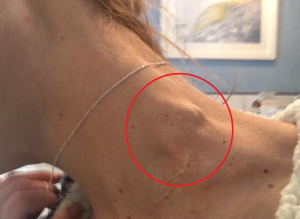
According to new clinical trial results, an injectable that helps injured spinal discs heal looks to offer long-lasting effects.
According to main researcher Dr. Douglas Beall, chief of radiology at Clinical Radiology of Oklahoma in Edmond, the majority of patients who received a VIA Disc injection experienced back pain relief that lasted at least three years.
According to the findings, three years following therapy, about 60% of patients reported a 50% or better reduction in their pain, and more than 70% reported a larger than 20-point increase in movement and function.”This is durable relief out through 36 months,” said Beall, who is scheduled to present these findings Monday at a meeting of the Society for Interventional Radiology, in Phoenix. Findings presented at medical meetings are considered preliminary until published in a peer-reviewed journal.
According to Beall, VIA Disc, the brand name for viable disc allograft supplementation, is a combination of donor bone marrow cells and ground-up spinal disc tissue.
The cells are “one of the antecedents of disc formation,” according to Beall.
They are chosen from the precise region where they are the progenitors to the disc material, assessed for their capacity to renew and differentiate from other cells, mixed with the allograft (the disc material), and then injected.
The VIA Disc blend of donor tissue and cells, once injected, enables the cells within a damaged disc to rebuild with healthy tissue, according to Beall.
The most common cause of chronic low back pain is degenerative disc disease, which develops when the soft, rubbery discs that act as a cushion between the spine’s bones start to deteriorate.
As the spinal bones develop closer to one another, they begin to rub against one other and become more vulnerable to pinched nerves, which causes pain and restricts movement and flexibility.






